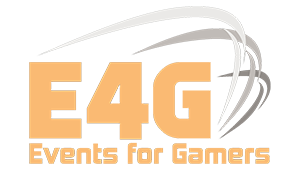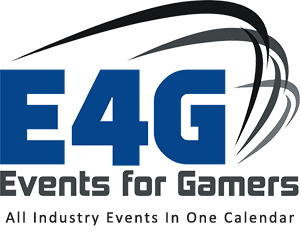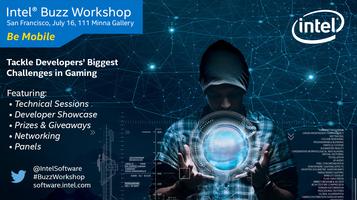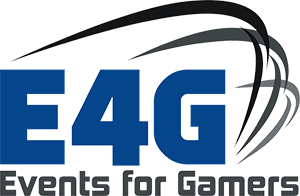San Francisco was one of the stops — a logical one at that — for the second Intel Buzz Workshop series, following their “Future of Gaming” series in 2013. The event series is still largely built around games, but this time around, with a distinctively mobile focus, as the lengthy “Intel Buzz Workshop for Game Developers: Be Mobile” title implicitly lays out there.

A Packed Event with Rich Content
I don’t have attendance last year to compare or contrast how this developer event and showcase stood up to the 2013 edition. However, on its own, the Intel Buzz Workshop packed a lot of content, people and extra goodies in an all-day event inside a two-roomed bar, at the 111 Minna Gallery venue, well-known to San Francisco event attendees of all stripes. Split between the gallery’s two rooms, the event offered both business and technically-oriented presentations on one side and a lounge in the other half of the space. On the other side of the casual meeting space, Sixense and the Oculus-capped STEM full-body presence in virtual reality system, frequently entertaining developers eager to try out the integrated VR platform.
Fortunately, there was still enough space between attendees that it wasn’t too loud, or roomy enough, to properly converse with the diverse audience of technically-oriented and business-focused and entrepreneurs who wear both of those hats.
Intel’s Keynote Opening
Starting from the bird’s eye view, Intel opened the series of talks with a data point defining the growth of the hardware market as a platform for game developers, calling out Gartner research that around the world PC, tablet, ultra-mobile and mobile phone shipments will grow 4.2% in 2014 and 6% in 2015. For Intel’s part, the company predicts it will ship 40 million tablets in 2014 alone.
Continuing from there, David Cole, president of DFC Intelligence, a market research agency with a game industry specialization, spoke about the market overview, with some data-heavy slides that illustrated where the business of interactive entertainment is headed. A few of the interesting takeaways is that, while mobile (portable consoles and other mobile platforms), PC and console platforms are expected to grow around the globe, they will even out to share roughly an equal portion of the market by 2018.
Mobile Industry Growth
Mobile, while the fastest-growing segment of the market, according to DFC Intelligence, is also the most challenging. On the bright side, iOS games were 56% (12.8 billion) of all downloaded apps in 2013, while for Google Play games were 36% (14.3 billion) of total downloaded apps in 2013. Tempting numbers for developers, right? Well…
The challenges are a result of the crowded marketplace, with difficulties compelling users to convert from free to paying users, high support costs, greater investment in marketing, and hype and numbers that distort that realistic outcomes for mobile game developers. Following David Cole’s presentation, he joined Shirley Lin (YeahMobi) and Jeff Hilbert (DDM) for a panel covering their global mobile gaming marketplace.
Development Platforms
With a stat-driven assessment of the market, Intel switched gears from looking at the development platforms to several of the tools and platforms a developer might use. A relatively comprehensive dive into Havok’s free Project Anarchy end-to-end 3D mobile game engine was the first in line, followed by a rundown of Intel’s development tools and libraries, then AppPortable’s talk on Wooga and Pocket’ Gem’s use of the Objective-C coding language. A chat with Gamezebo’s Joel Brodie and Sega of America’s Frank Hom, Intel’s insight into Unreal and Unity engines, and lastly in the procession of talks, Intel’s view of the technology and gaming space was on stage. Following that, Intel breezed through a quick procession of indie game demoes, including soccer, zombie action-adventure among others.
Depending on your perspective, the alternating one-two-three blast of market overview, dives from the middle end of the pool into platforms, SDKs, code bases and so on, might alternately engage or disinterest a certain sort of attendee. To that end, attendees came and left 111 Minna Gallery all day, but Intel retained a lot of attendees front to back.
Catering To Attendees
Part of the reason how and why Intel successfully kept folks in their seat and under the Gallery’s roof was how they incentives participation throughout:
Throughout the day, Intel and their partners kept attendees fed, caffeinated and later on, tempted with adult beverages as well. In the “nice to have” category, Intel also kept folks on their toes with random drawings and prizes, such as tablets, T-shirts, SSD drives, to attendees who tweeted about the event, win at a contest or answer a question. And for all who participated and filled out event feedback received a gift bag with a power brick. So, beyond the intangible value of content and networking, no one walked away empty-handed from the Buzz event either.
The San Francisco event won’t be the last in the Intel Buzz Workshop for Game Developers: Be Mobile series, as the organizers plan to take this show on the road again, next to Seattle and abroad thereafter.
– Paul Philleo, Contributing Editor



